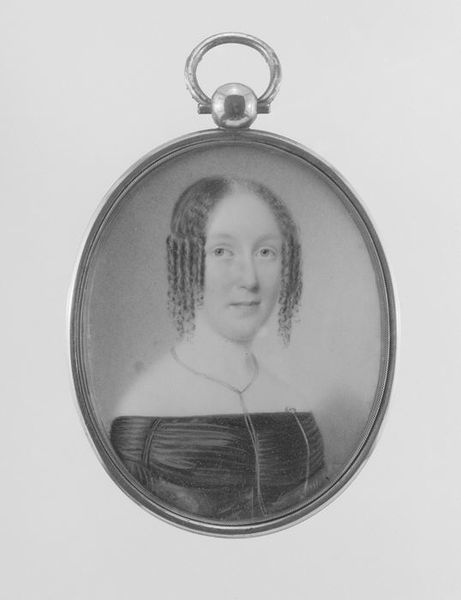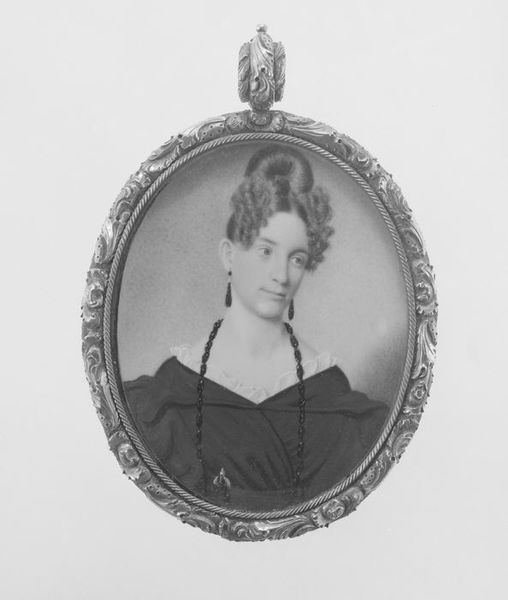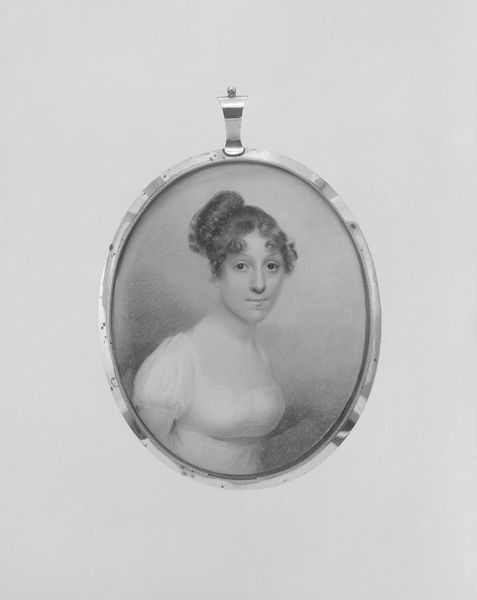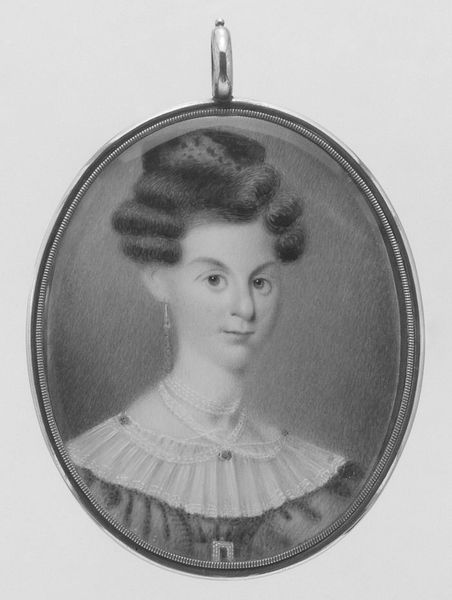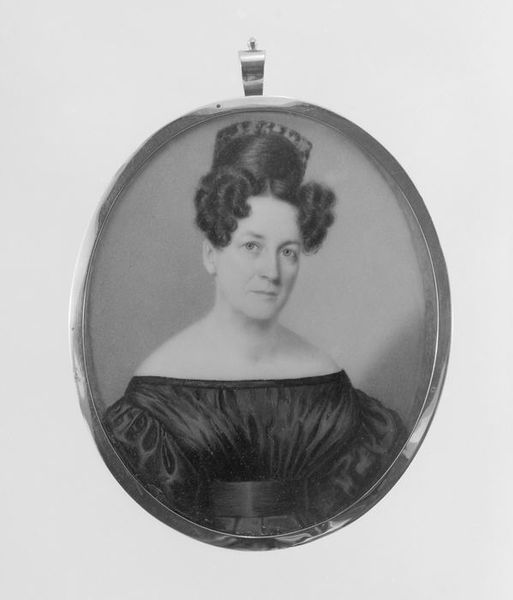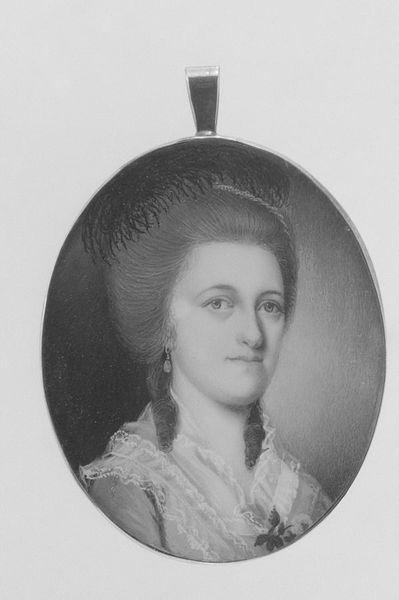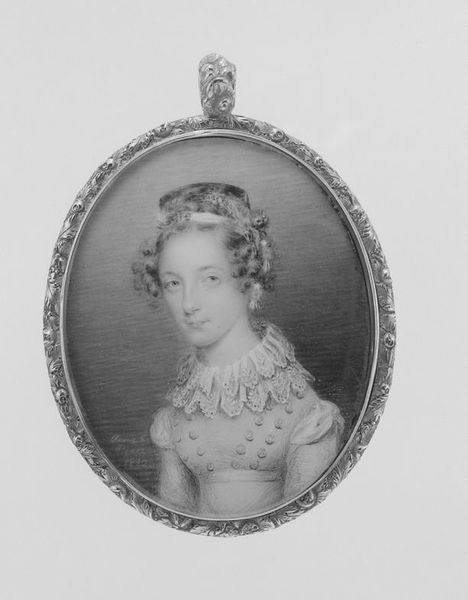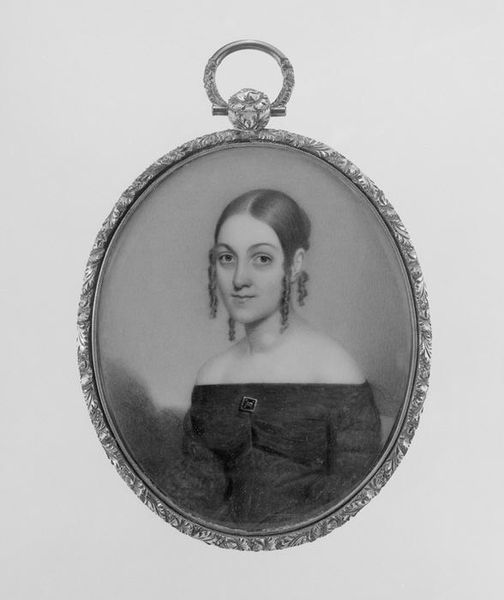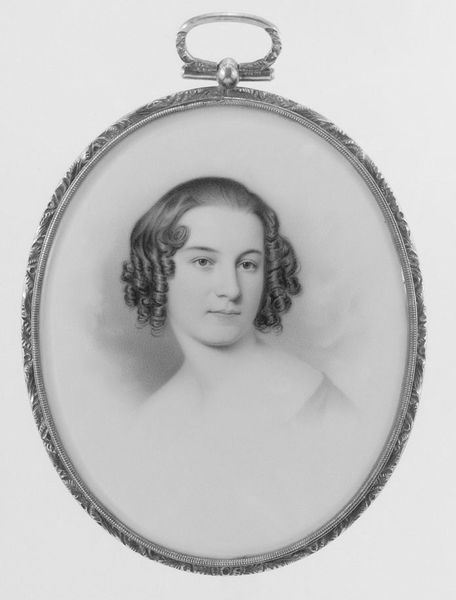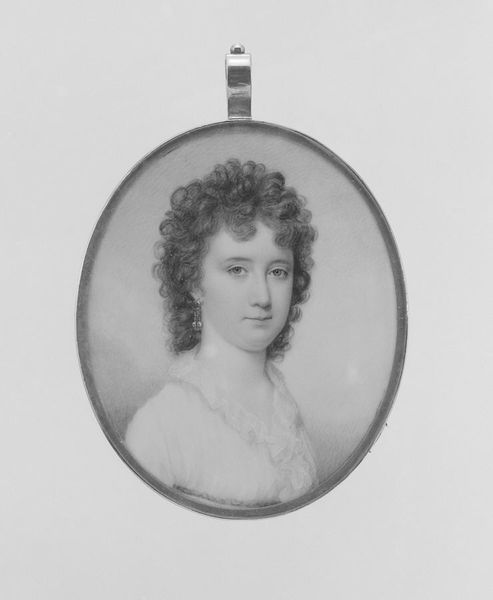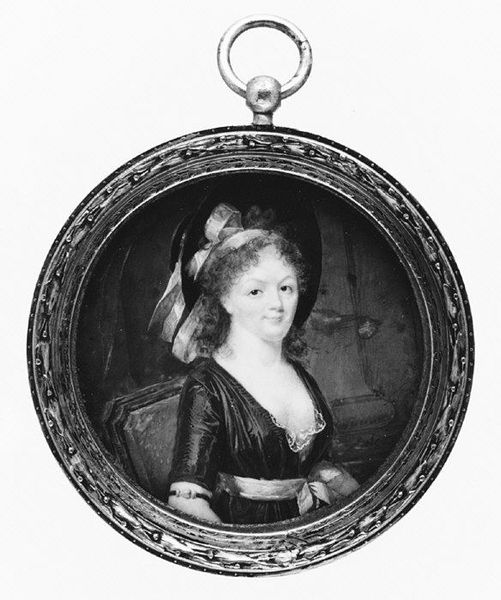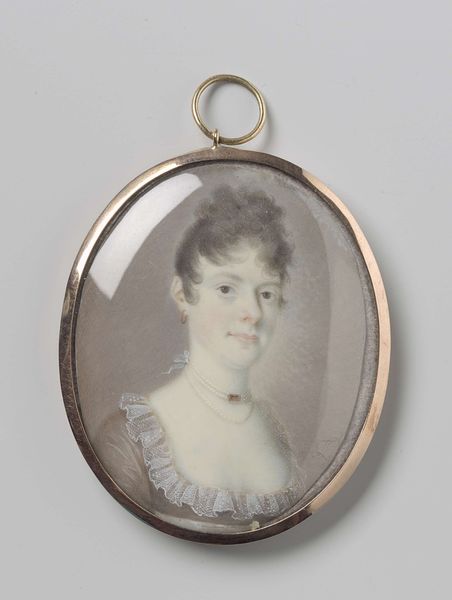
pencil
#
portrait
#
figuration
#
black and white theme
#
black and white
#
pencil
#
academic-art
#
miniature
#
realism
Dimensions: 1 1/2 x 1 1/4 in. (3.9 x 3 cm)
Copyright: Public Domain
Editor: So, here we have "Portrait of a Lady," done between 1775 and 1781 by Charles Willson Peale. It's a pencil miniature. I find myself wondering about her life; she has such a serene but subtly knowing look. What draws your eye when you see this piece? Curator: Ah, yes, the serene gaze that holds a thousand stories, doesn't it? What strikes me is the intimate scale combined with the precision of Peale’s pencil work. Imagine carrying this tiny window into someone’s soul close to your heart. There’s a tender vulnerability that emerges from its delicate rendering. It makes you ponder what secret longings or hidden strengths are tucked away within that tiny frame. Editor: I see what you mean about the scale lending to intimacy. What does this suggest about portraits in that era? Curator: Exactly! The small scale speaks volumes. Before photography, miniature portraits were highly prized keepsakes, often worn as jewelry or carried as a token of affection. It signifies a very personal relationship. To own such an image wasn't merely a status symbol, but a tender bond solidified in pigment. You see the detail in her hair, her dress? Editor: Now that you mention the jewelry aspect, I wonder about its potential audience and context of display, beyond its role as a familial object. Curator: Indeed. Perhaps it signaled availability, wealth, familial connections—a tiny, potent resume worn close to the heart. It makes me think about modern lockets holding pictures. Some things change; some remain profoundly, comfortingly similar. What's your takeaway now? Editor: I didn’t quite think about it that way! It’s more than just a nice drawing; it's a whole world in miniature. Thanks, I'll certainly remember that.
Comments
No comments
Be the first to comment and join the conversation on the ultimate creative platform.
